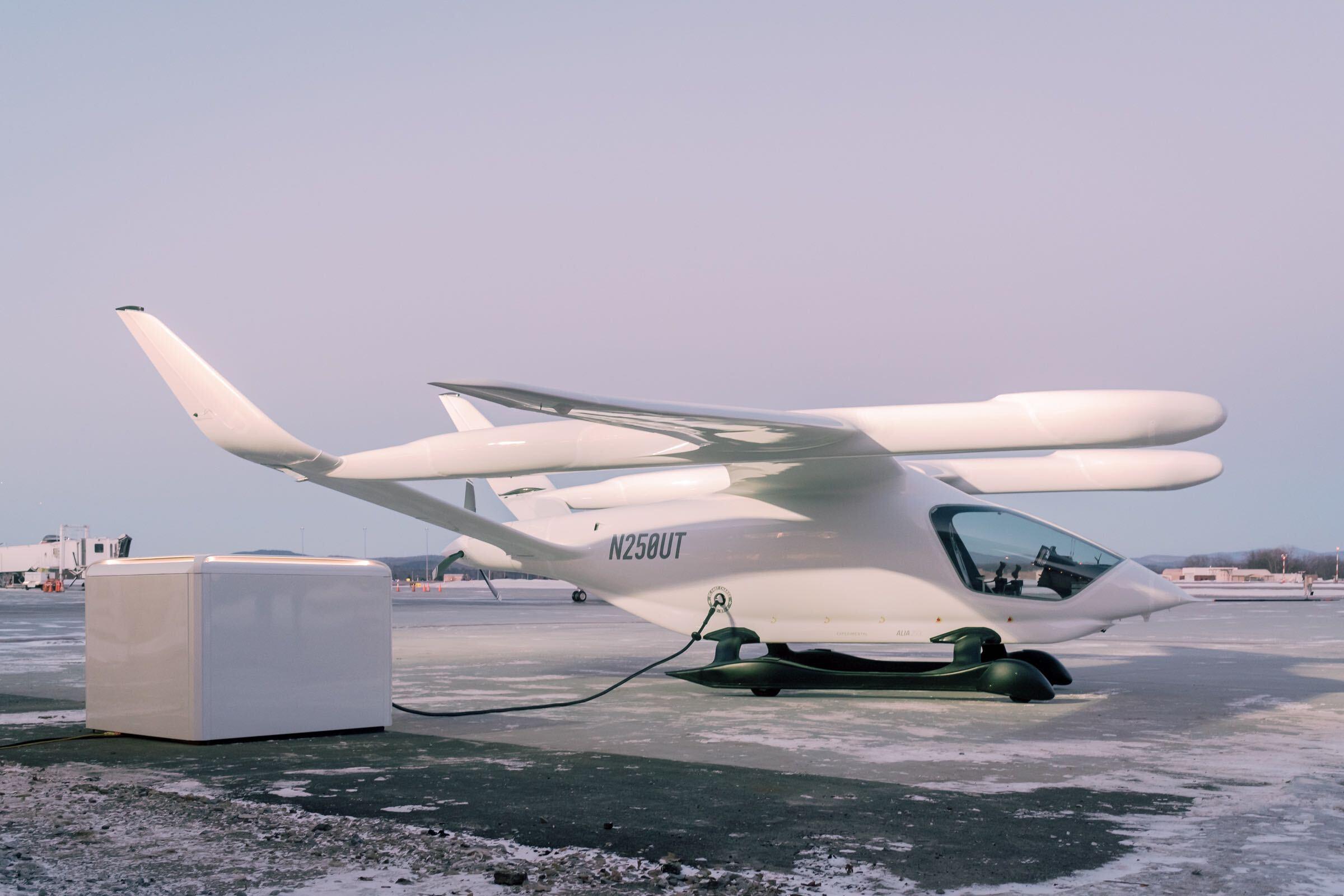
An Alia-250 developmental aircraft connected to its charger.
Airports and fixed-base operators (FBO) that plan to service electric air vehicles should have plans in place at least a year ahead of their arrival, says the developer of the Alia-250 electric vertical takeoff and landing (eVTOL) aircraft.
Speaking Oct. 25 during a webcast hosted by the National Air Transportation Association (NATA), Nate Ward of Beta Technologies outlined requirements for building an electric charging infrastructure for eVTOL aircraft. Beta, based in Burlington, Vermont, is readying the Alia-250 for planned entry into service as an organ transfer and cargo vehicle in late 2024.
“About the size of a Cessna Caravan,” the Alia-250 will accommodate a pilot and five passengers in passenger configuration or a pilot and three pallets in cargo configuration, fly to a range of 250 nm and charge in less than an hour, according to Beta. The startup has booked orders and options for the Alia from UPS Flight Forward, Blade Air Mobility, Bristow Group, United Therapeutics and aircraft lessor LCI.
There will be various ways of charging the aircraft; the most common application will be a 350 kW DC fast charger, “not a whole lot different than you would see at a highway rest stop, or maybe at a gas station today,” Ward said. The Level 3 charger “is as powerful as they come for this type of a charger. To put it in perspective, we’re talking about charging a battery that is the size of three [Tesla] Model S’s-worth of battery in under an hour.”
Ward is working on Beta’s planned multimodal charging network, which will support both electric aircraft and EVs, or all-electric road vehicles. “The concept of charging a vehicle is certainly not a new one; we’ve been charging EVs for quite a while at this point,” he said. “Bringing an electric vehicle charger, especially a high-powered one, inside [an airport] security fence certainly has its nuances. We’ve been working through that—we’re at about 50 airports right now in some form of development with a bunch more coming.”
Beta’s charging locations for aviation will consist of a charging dispenser adjacent to the ramp and a nearby rectifier unit that takes AC power from the electrical grid and converts it to DC power; each rectifier supports up to two chargers. A charger connects to the air vehicle using a Combined Charging System (CCS)-standard plug and 50-ft. retractable reel.
Airports and FBOs planning on installing charging locations must complete an FAA 7460, “Notice of Proposed Construction or Alteration” application and a Section 163 airport layout plan review—steps that currently take from two to nine months depending on the associated airports district office, Ward said.
“The long pole in the tent for sure is long-lead equipment, the transformer and the switch gear [needed],” he said. “There are some major supply chain issues and also many things that are being electrified. Those two things combined have forced us to strategize as effectively as possible around the pieces of equipment that are going to take the longest.”
“The sooner we can get to alignment with the airport on where something is going to go, the sooner we can order that [equipment],” Ward advised. “That probably takes anywhere from 20 to 44 weeks. If you’re looking at being in a position to be ready when these new-entrant aircraft come into the marketplace, you need to have solid plans in place at least a year ahead based on today’s timelines.”





